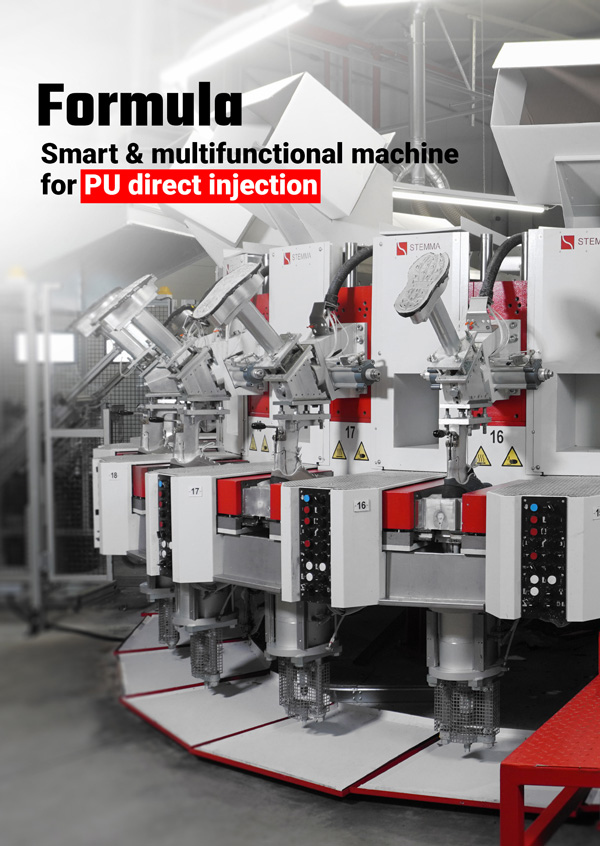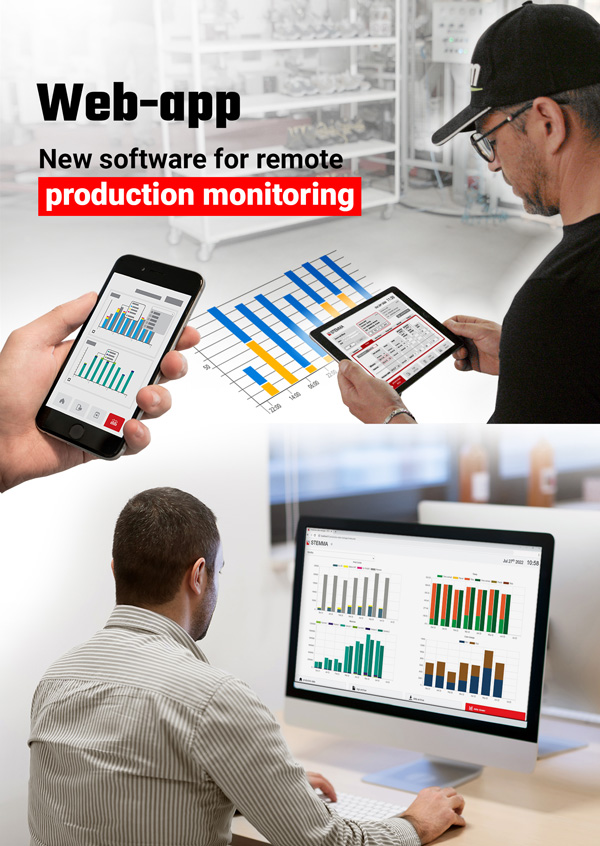Digitization, efficiency and sustainability, these are the key factors for large footwear productions, on which Stemma is focusing its research in the development of new technologies
Industry 4.0 is the practical representation of fully automated and interconnected industrial production. New digital technologies are the basis of its development. Stefano Pellizzari, CEO of the company, tells about the latest news in terms of machinery for the production of polyurethane soles and footwear and explains how new technologies and in particular the automation and innovation of processes are key elements in the growth of companies in the sector.

What innovations did you present at the latest edition of Simac Tanning Tech?
“We presented PLUS2 system, the molding process for the production of three-density polyurethane soles; and SIGNUM20, a machine for the production of polyurethane boots using RPU® spray technology, the automated process for spraying polyurethane mixtures capable of reducing molding defects and enhancing the characteristics of the articles made.”
What was the outcome of the fair? Did it meet your expectations?
“We had excellent feedback from the fair and were very satisfied with the quality of the meetings we had. The Chinese audience was still missing due to the covid restrictions, as well as many Russian and Ukrainian buyers that couldn’t attend because of the war. On the other hand, there was great excitement among those present, curiosity about the new products presented and interest in launching new projects.”
Can you tell us about “SIGNUM20”?
“SIGNUM20 is the latest generation of machines for the production of polyurethane boots using RPU® spray technology. Launched on the market around a year ago, they stand out for their efficiency production (with a cycle time of 30 seconds they increase productivity by 30% compared to traditional systems), for the quality and improved characteristics of the products (lightness, definition of details, uniformity in color distribution), for the simplicity in the delasting of the boot and loading of the mold thanks to an innovative station.”
What kind of feedback did you get on this new technology?
“This technology is proving to be successful and attracts great interest. The production numbers and results are very positive and exceed expectations to confirm the validity of the path. There is a significant reduction in consumption and the quality of the products made, is meeting with market appreciation.”
What do customers ask you most today?
“Our customers ask for innovative solutions both in terms of product and production efficiency. They look for solutions to create original articles thanks to the new polyurethane molding technologies. They are asking for increasingly automated and multifunctional machines, capable of producing with traditional systems but designed to be able to integrate even the most modern process.”
The current situation imposes many challenges. How are you facing them?
“We remain faithful to our vocation centered on the research and development of new technologies that respond to and anticipate market needs. The experience, the ability to innovate and the solidity of the team are the values that are most recognized to us on these occasions. No less important is the attention to the customer, to whom we ensure a top service and assistance.”
Today we cannot talk about innovation without merging it with sustainability. How do you combine these domains together?
“We agree with this statement and it is clear that in this historical moment the theme of sustainability plays a central and primary role at the basis of every research and development department. At Stemma we are very sensitive to the issue and strongly committed to energy saving projects, aimed at optimizing consumption and using recycled material in the polyurethane molding processes.”
In which areas will your future investments be directed?
“The focus is on the automation of processes and the development and enhancement of technologies for molding polyurethane, with a view to environmental sustainability and reduction of consumption.”



